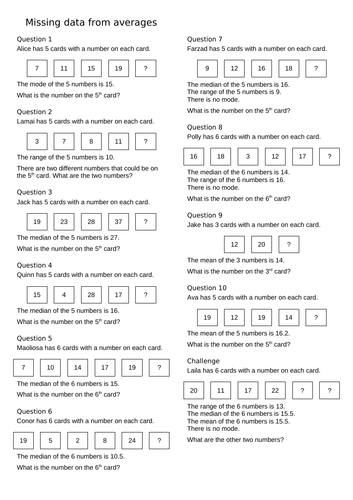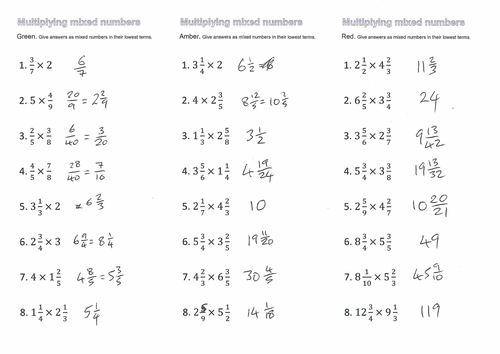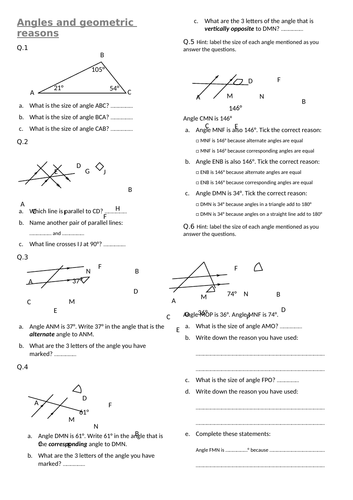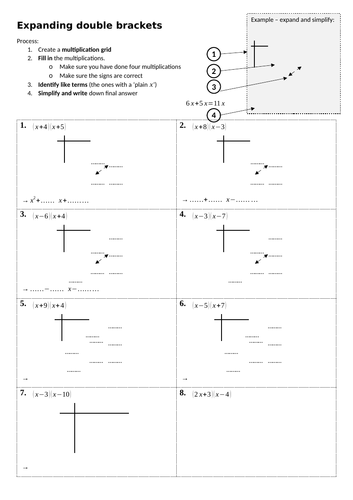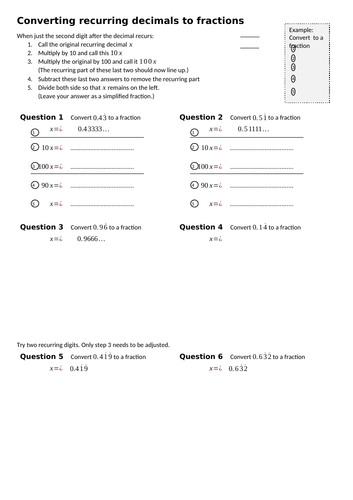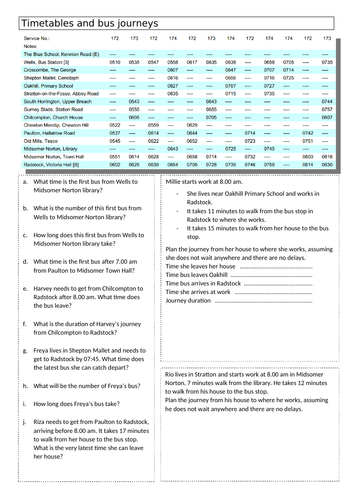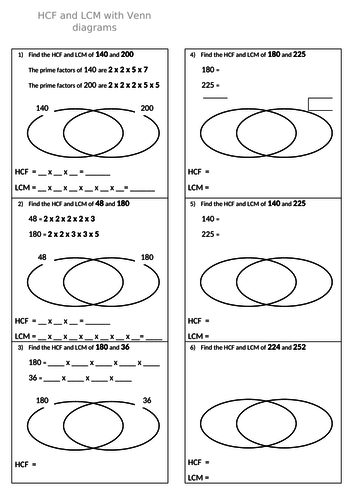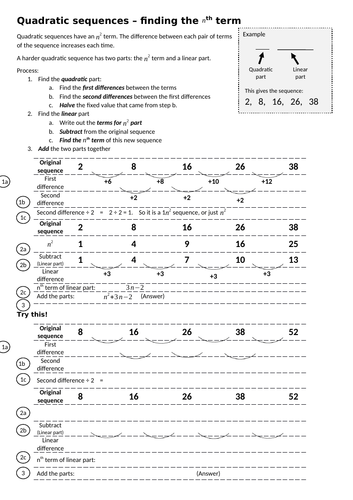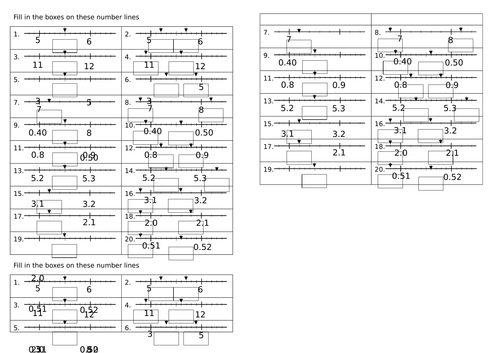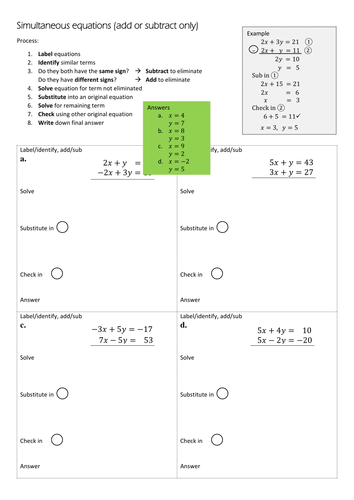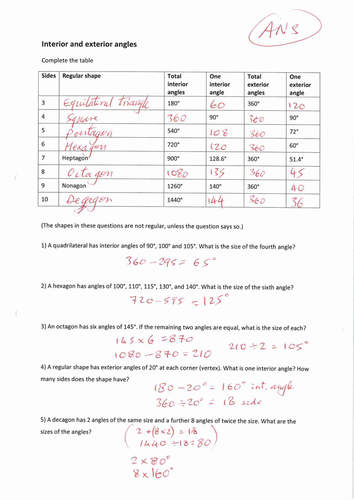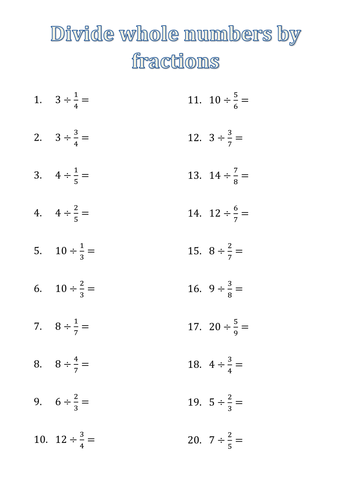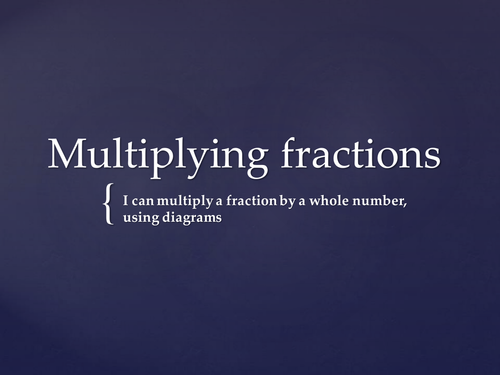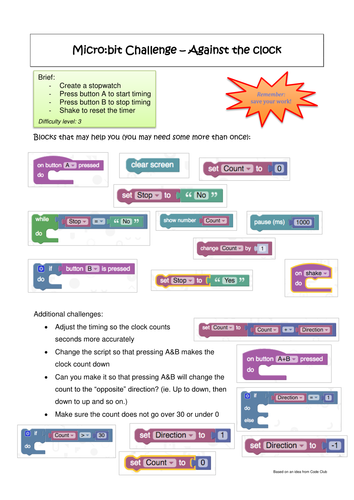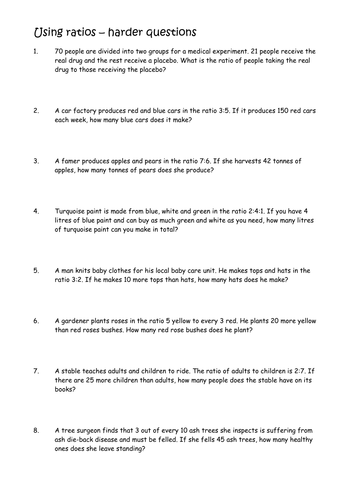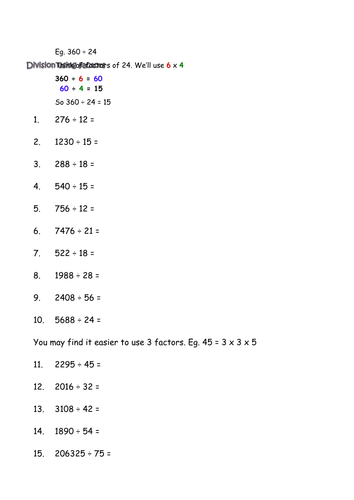
130Uploads
930k+Views
1075k+Downloads
All resources

Find missing data using averages
A set of questions where you use mode, range, median and mean to find one or two missing values from a list. Answers provided.

Simple and compound interest - scaffolded
Example and 5 main questions. Straightforward amounts of money and interest rates for 2 to 4 years. All scaffolded as tables. (Need to be able to find 10%, 5% and 2% using a calculator.) 3 challenge questions where they have to draw out their own tables.
Answers provided. (Question 5 and the Challenges have been rounded to pence - use your own judgement regards acceptable values!)

Multiplying mixed numbers RAG
Quick set of 8 questions (x3) for multiplying mixed numbers. Answers provided.

Angles and geometric reasons - intro
Fill-in worksheet introducing correct way to name angles/lines and identifying alternate/corresponding angles. Goes on to get students to identify and then write correct geometric reasons.
Answer sheet to match (although student sheet slightly reconfigured since to give correct names for angles).
Meant as a reasonably easy introductory resource once key ideas have been explained from the board. Hopefully accessible to my Y7s (Yup!)
Second worksheet (with answers) emphasises reasons for each angle

Expand double brackets - grid method - scaffolded
Worksheet with scaffolding that reduces for each question for expanding double brackets using a “grid multiplication” method.

Recurring decimals to fractions - scaffolded
Scaffolded worksheet for converting decimal with second or second/third digit from decimal recurring.

Timetables and journeys
Worksheet on reading timetables (using a real bus timetable!) and planning journeys.

HCF and LCM using Venn diagrams - scaffolded
Assumes learners know how to find prime factors (using factor trees etc.). First question laid out to “fill in”. Subsequent questions have less structure as worksheet progresses.

Finding nth term of quadratic sequences
Explanation plus 4 scaffolded questions for how to find the nth term of a quadratic sequence. Answers on separate PDF.

Place value - use scales to find intermediate decimal values
20 quick questions. Use scale on left to get middle value (eg. between 5 and 6) or to establish the increments on the scale. 2nd question, fill in two more values on scale on right based on that answer. Repeat x 10. (Most increments are 10, but some are just five 'per unit'. One, two and 3 decimal places.)

Circumference of a circle - scaffolded
Example and fill-in sheet with 5Qs for circumference with both radius and diameter. With answers

Simultaneous equations - add/sub (scaffolded)
Structured for more straightforward simultaneous equations. Just adding or subtracting. (No need to scale.)

Perimeter of compound shapes
Presentation and worksheet for middle ability Y8 students. (50 minute lesson.) Could be extended for students to calculate area as well.

Perimeters of compound shapes with missing lengths
Various shapes (all but one rectilinear). All have missing lengths which need to be found. Two are in mixed units. Answers given in text box. (Delete before printing!)

Maths Interior and exterior angles worksheet
Simple complete the table and answer a few questions exercise.
(12/7/16 Corrupted resource reinstated)

Divide whole number by a fraction
Simple worksheet on dividing whole by unit and non-unit fractions. (20 questions, no examples. Last three have mixed number answer.)
(12/7/16) Answers uploaded

Multiply fraction by a whole number
Visual demonstration/explanation of multiplying a fraction by a whole number using diagrams

BBC micro:bit challenges
A series of worksheets for the BBC micro:bit. Each has a task brief, suggested blocks to use and some extension suggestions. Each has been given a nominal difficulty level (based on my judgment).
The idea is not to give step-by-step instructions but present a set of relevant 'Lego blocks' to put together in the correct order. The blocks appear on the sheet approximately in order, but pupils will need to think about the order and may need to edit specific text or values. Where similar blocks are needed (such as strings for 'win' and 'lose'), they may only be shown once.
'Solutions 1' is a set of screenshots of my ideas on how to meet the briefs. It is not comprehensive; in particular, few of the more 'basic' solutions are shown. The solutions may not all be optimal. It is called 'Solutions 1' in the optimistic reckoning that more challenges may yet come!
Example-solutions.doc is NOT a document file. It is actually a Zip of tokenised files for working versions of the worksheets which can be loaded into the BBC's online editor. (To use, download the file and change the extension from DOC to ZIP.) Do bear in mind that there may be more efficient ways to achieve the same result (not least by converting from the Block Editor to Touch Develop). This is something that bright pupils might want to investigate, especially for harder tasks or to change how long images/text display on screen.
The files with CC in the name are based on activities suggested by Code Club, but using the Microsoft Block Editor (not Code Kingdoms JavaScript).
[24/5/16 solutions screenshots added.]

Ratio - harder worded questions
8 questions. Includes questions where the key to the answer is in the "extra" parts (the difference between the two ratios).
(12/7/16) Answers uploaded

Division using factors
Straightforward worksheet with example of how to divide using factors and 15 questions. (This is so much easier than long division, so long as the divisor can be broken into convenient factors. Wish I had known about this year ago!)
(12/7/16) Answers uploaded

